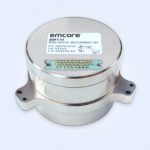
Hybridization of GPS and inertial measurement unit (IMU) is a well-known concept, with strong developments in the field. Up to now, however, such hybridization for civil applications has been mainly limited to either processing the navigation output of both systems (loose coupling) or integrating measurements from both systems into a Kalman filter (tight coupling). Although ongoing research is taking place on INS/GPS integration at the tight level, an INS/Galileo has not yet been investigated.
Hybridization of GPS and inertial measurement unit (IMU) is a well-known concept, with strong developments in the field. Up to now, however, such hybridization for civil applications has been mainly limited to either processing the navigation output of both systems (loose coupling) or integrating measurements from both systems into a Kalman filter (tight coupling). Although ongoing research is taking place on INS/GPS integration at the tight level, an INS/Galileo has not yet been investigated.
In the framework of Europe’s research and development activities in the Galileo program, the Galileo Joint Undertaking (GJU) awarded a contract to DEIMOS Engenharia and Institut de Geomàtica to identify improvements and further possibilities for hybridization techniques: an initiative known as IADIRA (Inertial Aiding – Deeply Integrated Receiver Architecture) project.
The IADIRA project focuses on inertial aiding and inertial coasting using low-cost micro-electromechanical (MEMS) miniature inertial measurement units, seamlessly and transparently integrated into a GNSS receiver through an inertial antenna comprising a GPS antenna and inertial sensors. A tightly (or deeply) coupled integration approach was used.
Superior navigation performance results from the aiding provided to the carrier and code phase tracking loops through the combined inertial-GNSS derived position and velocity. The integration also allows the receiver loops to coast when satellite signals are lost.
The development of the IADIRA concept required selection of an application by which to define the final requirements that needed to be met by INS/GNSS. Based on the planned applications of Galileo (established in the so-called Galilei project) as well as the past experience of the project partners, a rail application was selected in line with anticipated future growth in that sector.
The project focused specifically on train traffic control and track surveying. Given that these applications are classified as safety-of-life applications, the requirements are rigorous in terms of system reliability and accuracy.
This article describes a test-bench developed to analyze and demonstrate the INS/Galileo concept and a receiver prototyped in a sample-based (bit-true) Galileo software receiver. It also reports the results of a data collection campaign conducted to assess the performance of the prototype receiver using real inertial sensor data. In this test, a navigation-grade IMU was used to provide a truth reference to measure the performance increase when using IADIRA concept
. . . .
Conclusion and the Way Ahead
GNSS-INS deep integration increases application robustness, service availability, integrity, accuracy, and precision. The main advantages of GNSS-INS deep integration are:
-
Acquisition and tracking of weaker signals and better quality of measurements
-
Navigation solution available with fewer than four satellites in view and even under full signal blockage
-
Nearly instant reacquisition after signal blockage
-
Increased robustness to interference and cycle slips
Next generations of GPS and Galileo receivers can take advantage of such low-cost and fully integrated GNSS-IMU systems based on miniaturized sensor technology, thus allowing for innovative and more challenging applications of satellite navigation. This will be possible thanks to the availability of the new Galileo signals, such as BOC or Alt-BOC, combined with inertial aiding and coasting as described in IADIRA concept. Testing activities with lower cost sensors and operational validation in real environment followed by industrialization of IADIRA are the next logical steps.
(For the rest of this story, please download the complete article using the PDF link above.)




